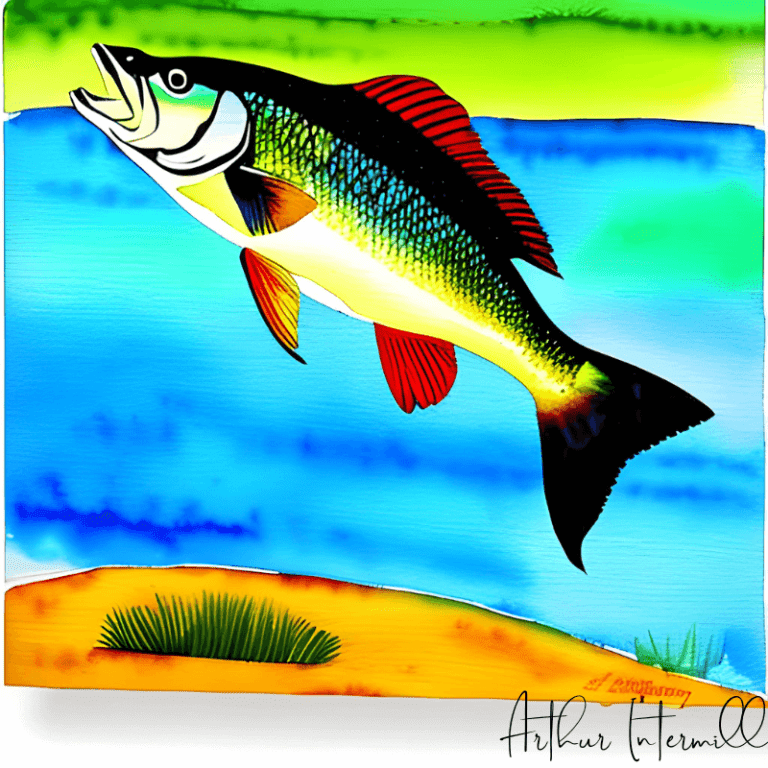Reeling in the Dough: 12 Ways to Make Money Fishing

You love to fish but did you know that you can actually make money fishing as a legitimate way to earn a living?
Yup, it’s reel-ly true!
You can join the thousands of other avid anglers who’ve turned their passion for fishing into a profitable way to earn extra money!
Did you know that the U.S. commercial and recreational fisheries have over $250 billion dollars in sales per year?
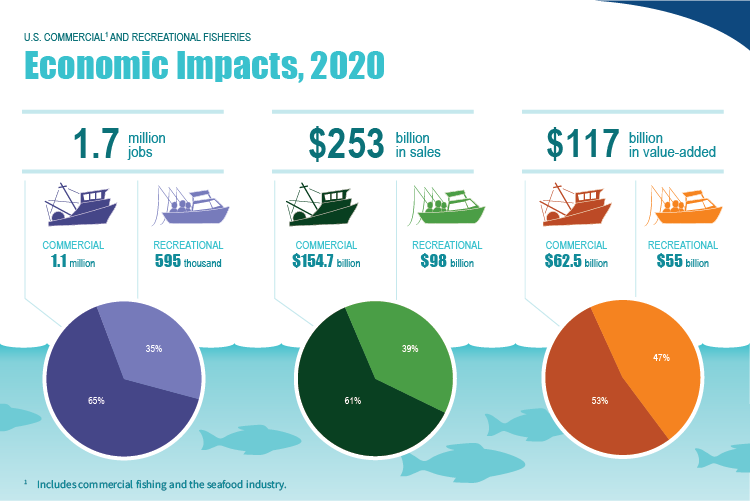
I don’t know about you, but I wouldn’t mind having a slice of that cash-filled fish pie!
Here we’ll go over some of the very best ways to make good money through fishing.
But to be totally clear: This isn’t another one of those “get rich quick” schemes where you just sit back sipping your favorite beverage and do nothing while all the big bucks just magically flow in.
Just like with any other real business, you’ve got to do some serious legwork and bust your butt before you see a profit. Making money fishing is no different!
As you go through this post, jot down some ideas that seem interesting to you. Who knows, there may be several possibilities to get your entrepreneurial wheels spinning!
So grab your rod and reel, and let’s get started on turning your fishing hobby into a money-making machine!
{Affiliate links included below.}
How to Make Money Fishing
With finances tight for just about everyone these days, finding a side hustle (or main hustle) can make all the difference in not only staying afloat financially but actually getting your head above the water.
So if you want to learn how to make money fishing, grab your fishing gear and hold on tight!
I’m about to unleash 12 killer tips that’ll turn your love for angling into a cash-cranking machine.
If you’re eager to make a splash and reel in some serious moolah while casting your line, then listen up, my fellow fishing enthusiasts.
In this article, I’ll hook you up with some secret strategies that’ll make your line whiz and your bank account sing .
We’re talking about things like selling your catch, becoming a fishing guide, starting a YouTube channel, diving into e-commerce, and even creating your own fishing blog.
So, let’s dive into the deep end and unleash a tsunami of profit!

Make Money With Commercial Fishing
One of the best ways to earn a living through fishing is by commercial fishing.
Setting up a commercial fishing operation can take a ton of work but but also yield some decent profits.
To be really successful, you’ll need to get the necessary licenses and permits, purchase or lease the equipment, and figure out the very best fishing spots.
In this section, we’ll go over the main things to think about, and the steps you’ll need to take, to get up and running with your very own commercial fishing operation.
Don’t skip these steps! They are important to help make your dream a reality.
Make Sure You’re Legally Licensed
The first step in setting up a commercial fishing operation isn’t much fun, but it’s absolutely necessary. This involves doing the time-consuming grunt work to get all the necessary licenses and permits.
Now, the licenses you’ll need will depend on things like: the type of fish you plan to catch, the area where you plan to fish, and how big your operation is going to be.
Although this can seem like a pain in the butt, it’s still really important to find out about the specific rules and regulations that apply to fishing businesses in your area.
You have to follow all local, state, and federal laws — or else. (After all, facing fines and penalties for not being legal isn’t actually a fun thing to deal with.)
At the very least, you’ll have to have a commercial fishing license and register your fishing vessel. You’ll probably also need to get permits for certain types of fishing gear — or for specific areas of the ocean.

Get the Equipment
The next step is to purchase or lease the appropriate equipment.
In figuring out the type of equipment you’ll need for your commercial fishing outfit, it can definitely vary from place to place. A lot of this depends on things like the type of fish you’re going for, and also the fishing methods you’ll be using to get your catch.
Some of the basic equipment includes a fishing vessel (AKA fishing boat), fishing gear such as nets, hooks, and lines, and safety equipment (life jackets, flares, etc.).
If you’re planning to catch a specific type of fish, you may need specialized gear, such as a longline for catching swordfish or a trawl net for catching shrimp.
While you may have limited upfront finances to work with, you’ll still want to try and invest in the highest quality equipment you can.
You definitely don’t want a bunch of mechanical problems and breakdowns while you’re out in the water, so make sure everything’s in good shape and well-maintained.
The overall success of your operation will have a lot riding on it!
Find the Best Fishing Spots
Finding the best fishing spots is super important to how successful your commercial fishing operation actually is.
Locating those sneaky fish populations can be a fine art as much as a stroke of luck.
Researching the location and timing of fish migration patterns, as well as consulting with local fishing experts, can also help you locate the best fishing spots.
You may also want to consider using technology such as sonar and GPS to help you locate fish.
After you go through all the paperwork (yup, lots of red tape!) needed to obtain all the necessary licenses, permits, and equipment, then it’s finally time to get going on your commercial fishing operation!
It’s probably pretty obvious, but commercial fishing is a competitive industry. Your success will depend on hard work, determination, and your own knowledge of the business.
You’ll also need to be aware of the sustainability of the fish population — and always follow the rules and regulations.

To wrap things up, setting up a commercial fishing operation requires obtaining the necessary licenses and permits, purchasing or leasing the appropriate equipment, and finding the best fishing spots.
As long as you make sure to always obey all laws and regulations, take care of your equipment, and have a good grasp of the fishing industry and fish populations, success will be within reach.
With hard work and determination, a commercial fishing operation can be a profitable and rewarding endeavor!
Guide the Way: Become a Fishing Guide
Another popular option to make money fishing is to start a fishing charter business. This involves taking paying customers out on a fishing boat for a fishing trip in a specific location.
Another closely related option is to start a fishing guide service, which involves taking customers to the best fishing spots and providing instruction and assistance in landing the lunkers.
Starting a fishing charter business can really be a great way to turn your passion for fishing into a profitable business.
However, it’s important to plan ahead, develop a solid business plan, and understand the market before launching out on your guide venture.
In this section, we’ll provide an overview of the steps involved in starting a fishing charter business and offer tips on building a client base, marketing, and running a profitable operation.

Create a Business Plan
The first step in starting a fishing charter business is to develop a business plan. Don’t skip this step!
A business plan can help you figure out these super important things: your target market, financial goals, and the steps you need to take to achieve those goals.
If you have the resources, it’s a good idea to conduct market research and understand the competition in your area.
Consider factors such as the types of fish in the area, the demand for fishing charters, and the costs associated with operating a charter business.
Once your business is up and running, then the fun begins — focusing on making money!
This can include setting competitive prices, controlling costs, and keeping accurate financial records.
You’ve also got to be aware of, and stay on top of, the regulations and rules of the fishing industry. Screw up here and a fine can be costly!
Build Your Client Base
Once you’ve got your business plan in place, it’s time to start building your client base (that means your paying customers!).
A strong client base is literally the backbone of a successful fishing charter or guide business.

To build a client base, you’ll need to create a marketing strategy that targets potential customers.
This can include advertising in local newspapers, magazines, or online, as well as networking with other fishing enthusiasts and charter operators.
Social media (think Facebook, Instagram) can also be powerful tools for reaching potential customers and building relationships with them.
Here’s an example of a Facebook page for a fishing charter that does a good job!
In addition to marketing, it’s essential to provide excellent customer service to retain and attract new customers. This can include providing detailed information about the fishing experience, offering flexible scheduling, and being responsive to customer needs and feedback.
This may seem obvious, but sometimes the obvious needs stating: Make sure your boat and equipment are always in tip-top shape.
Breakdowns and accidents can ruin not only customer experience but also your business!
Local Fishing Guides
Closely related to commercial fishing charters is becoming a paid local fishing guide. This is another great way to turn your love of fishing into a profitable enterprise!
To become a paid guide, you’ll need to have a deep knowledge of the local fishing spots in your area, the types of fish in the area, and the best techniques for catching them.
But not only that — don’t forget you’ll need to have all the red tape stuff (necessary licenses and permits) and also the equipment required for the job.
To get started, you can start by networking with other fishing enthusiasts and offering your services informally.
Once you have some experience, you can look into obtaining professional certifications and licenses, such as a fishing guide license.
It’s also important to create a website and social media presence, to market your services, and to build a reputation as a reliable and knowledgeable guide.
To create your own affordable and reliable website, we strongly recommend this hosting service. We use it on our own website and have been very impressed with the quality and customer service.
You can also offer different type of fishing experiences such as fly-fishing, deep sea fishing, etc.
Building up a positive reputation with top-notch customer service and a fun and smooth operation will help you to get more and more customers.
This will help grow your business so you can fulfill your financial dreams while helping your customers fulfill their fishing dreams.
To sum up, starting a fishing charter or local fishing guide business can be a great way to turn your passion for fishing into a profitable enterprise.
However, you’ve got to always be planning ahead, honing a solid business plan, and figuring out your market — ideally before launching out on your venture.
With some butt-busting elbow grease, determination, and a little bit (or better a lot) of know-how, you really can turn your love of fishing into a thriving money-producing charter or guide business!
Stuff Those Fish: Make Money Through Taxidermy
Get ready to dive into the exciting world of making dough with fish taxidermy!
We’re talking about a sportsman’s craft where you bring those scaly beauties back to life, immortalizing them in all their finned glory.
Fish taxidermy can be a mind-blowing blend of art and science. It’s all about skillfully preserving and mounting fish specimens to create jaw-dropping displays.
It’s like a magical dance of craftsmanship and creativity, where you turn a lifeless fish into a mesmerizing work of art!

First things first — you’ve got to learn the tricks of the trade.
Learning the craft of taxidermy takes patience, steady hands, and an eye for detail. You’ll have to master the art of skinning, fleshing, and tanning those fishy skins.
Now, let’s talk tools. Knives, scalpels, tweezers, and a whole arsenal of other taxidermy supplies. Don’t skimp on quality, invest in the best, and watch your artistry soar!
When it comes to choosing fish for taxidermy, not all fish are the same in the taxidermy world. Some are more suited for this art form than others. Think vibrant colors, unique patterns, and impressive sizes.
Trout, bass, and marlin are just a few examples of prime candidates for your artistic endeavors.
Now, let’s discuss getting business. You’ll need to build your brand, showcase your work on social media, and create a buzz.
Market your taxidermy services to anglers, fishing enthusiasts, and even interior decorators and rental lake cabin owners.
Starting your own online store to sell your own taxidermy fish mounts is another great option.
In the end, making money with fish taxidermy is an artful adventure. It takes dedication, skill, and a genuine love for the underwater world.
So, grab your tools, unleash your creativity, and embark on this taxidermy journey.
Who knows? You might just be the one to create a masterpiece that makes waves in the fishing world!
Make Money with Fishing Tournaments
Entering and winning fishing contests and competitions is our next way to make money fishing.
Some fishing competitions award prizes in the five digits while others go up to six digits!
This can be a great way to make money and gain recognition in the fishing community — but there are some things to look at first before you go this route.
There are many different types of fishing competitions, such as national competitions, freshwater tournaments, saltwater tournaments, and fly-fishing competitions.
Be aware that each one of these different types of tournament fishing competitions is going to have its own set of rules. You’ll need to take some time to understand the ground rules before entering — otherwise you could be disqualified, which is not a fun thing to happen!
Fishing Skill Levels
One of the most important things to consider when entering a fishing competition is your strategy and your fishing skill level.
You don’t have to be a professional fisherman to compete, but you do at least need to know more than the average angler.
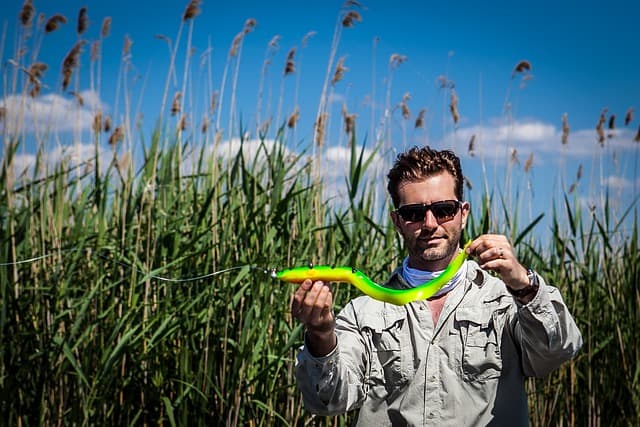
This includes factors such as the type of fish you plan to target, the location of the competition, and the specific fishing season.
It’s also important to have a solid game plan for the day of the competition, such as deciding on the best fishing spots and techniques to use.
If bass fishing is your thing, check out this handy bass fishing tournament schedule guide.
You’ll also want to have a good understanding of weather conditions (and tides for ocean fishing), which can greatly affect fish movements and bite activity.
Fishing Competition Equipment
Another key aspect of winning a fishing competition is having the right equipment.
You’ll need to have the appropriate fishing gear for the specific competition.
Take an inventory of your rods, reels, lures, and bait, as well as any safety equipment, such as life jackets and flares. You may need to invest in some gear if you don’t have the stuff you need to successfully compete.

In addition to equipment and strategy, as mentioned, it’s also important to have a good understanding of the rules and regulations of the competition.
This includes understanding the weigh-in process, the scoring system, and any restrictions on fishing gear or techniques.
Don’t forget the size or catch limits, as well as any regulations regarding the handling and release of fish. Getting disqualified would be a major bummer!
Fishing Competition Sponsorships
Securing sponsorships is another important aspect of fishing competitions and becoming a professional fisherman. Sponsorships can provide financial support to keep your fishing business going, as well as some much-needed exposure for your name.
To get a good sponsorship, it’s important to have a solid track record of success in fishing competitions and also to have a good reputation in the fishing community.
It’s also a great idea to have a strong social media presence, and a professional website so potential supporters can check out your accomplishments.
Building relationships with local businesses and fishing-related companies can also help you secure sponsorship opportunities.
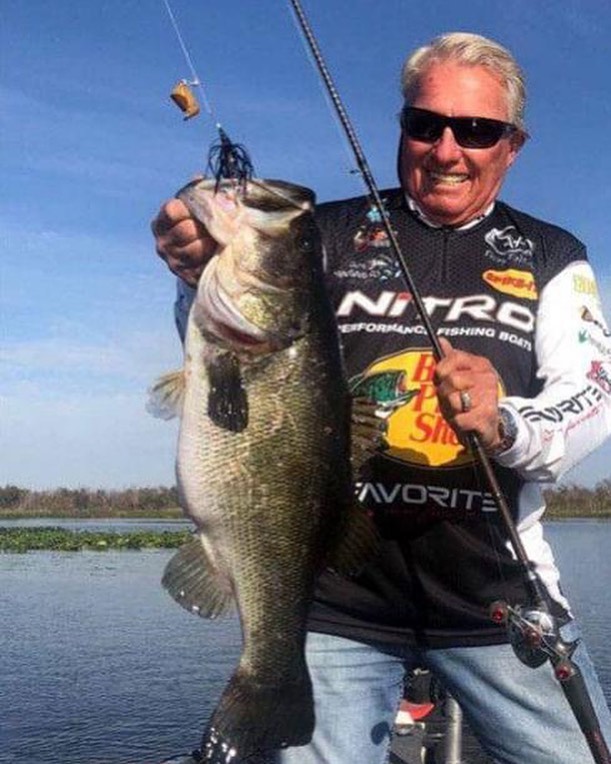
Entering and winning fishing competitions can be a great way to earn prize money and gain recognition in the fishing community.
It’s important to have a solid strategy, the right equipment, a good understanding of the rules and regulations, and to secure sponsorships.
With some hard work, persistent attitude — and a bit of good luck — you really can turn your hobby into a profitable fishing competition money-maker!
Make Money Buying, Selling and Repairing Old Fishing Tackle
Making money by buying and selling old fishing tackle can be a fun — and profitable — hobby.
The market for old fishing tackle such as such as rods, reels, and lures can be quite lucrative, as many people are willing to pay a premium for vintage or rare items.
The first step in making money by buying and selling old fishing tackle is to educate yourself about the different types of tackle and their value.
This can include researching different brands, models, and manufacturers, as well as understanding the market trends and prices for different types of tackle.
Joining online communities or forums dedicated to fishing tackle can also be a great way to learn more about the subject.
Once you have a pretty good understanding of the different types of tackle and their value, it’s time to start looking for items to buy!

There are many places to find old fishing tackle, including garage sales, estate sales, and online marketplaces such as on eBay or Facebook groups or Marketplace.
When looking for tackle to buy, it’s important to keep an eye out for items that are in good condition and are considered rare or vintage.
And then once you have found items to buy, it’s time to start selling them!
There are several ways to sell old fishing tackle. Some of the best include online platforms like eBay, local classifieds, and at tackle stores, fishing shows or flea markets.

You could also start an eCommerce store where you market and sell your vintage fishing finds.
Be sure to price your items competitively, while still making a profit.
You could even open a brick-and-mortar store if you have a large collection of tackle.
Here is one website that buys old tackle.
Many people enjoy decorating their homes, offices, or cabins with vintage fishing gear such as paddles, nets and other items.
Repair & Restore Old Fishing Tackle
In addition to buying and selling old fishing tackle, you can also make money by repairing and restoring vintage tackle.
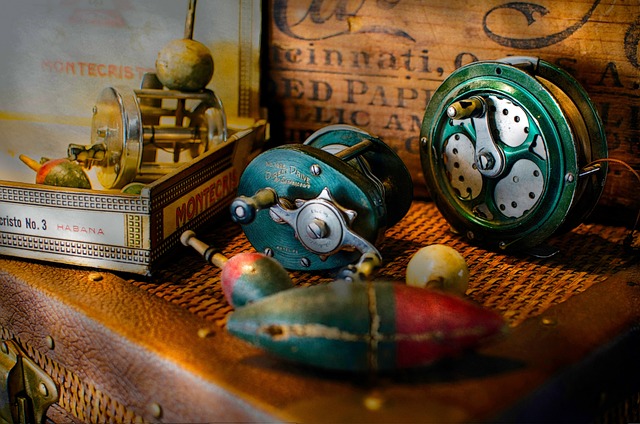
Many people are willing to pay for vintage tackle that has been restored to its original condition. This can include repairing broken rods and reels, replacing missing parts, and cleaning and polishing old lures.
So to sum up this section, making money by buying and selling old fishing tackle can be a lot of fun and also a great way to turn a hobby into some bucks.
By educating yourself about the different types of tackle and their value, keeping an eye out for rare and vintage items, pricing your items competitively, and considering additional revenue streams such as repairs and restoration, you can make a good stream of income.
Aquaponics for Profit
Next up is the fascinating world of making some cash with a home aquaponics system!
Aquaponics is a snazzy blend of aquaculture (AKA fish farming) and hydroponics (growing plants without soil).
In this genius system, fish provide the nutrients for plants, and in turn, those plants filter the water for our scaly friends. It’s like a never-ending dance of give and take, where everyone’s a winner!

When starting off with aquaponics, you need to choose the right setup for your home. Don’t go overboard and spend all your hard-earned dough on a mammoth-sized system straight away.
Start small and work your way up. A humble setup with a few fish tanks and grow beds will do the trick. Plus, it’ll give you a chance to learn the ropes without breaking the bank.
This is what we recommend for getting started with aquaponics.
Selecting fish can be a fun part of setting up your home aquaponics setup. But you’ll soon find that not all fish are created equal.
Tilapia, trout, and catfish are some of the popular choices. Do some research, figure out which fish suits your climate and resources, and you’ll be on your way!
Next up, let’s talk plants, the second main part of an aquaponics system.
Leafy greens like lettuce, kale, and spinach are like gold mines in the world of aquaponics. They are easy to grow and can fetch a pretty penny at the market. Herbs like basil, mint, and cilantro, and even fruiting plants like tomatoes and peppers can also be great money-makers.
Water is truly the lifeblood of your aquaponics empire. Oxygenate that water, monitor the pH levels, and keep it squeaky clean. A happy, healthy fish means more nutrient-rich water for your plants.
When it comes to selling your fish and produce, farmer’s markets, restaurants, and even local grocers are your allies in this aquaponics money-making journey.
Just like with any of the other methods, making money with a home aquaponics system isn’t a walk in the park (or beach). It takes dedication, hard work, and a whole lotta love for the fish and plants.
You can get started with the growing field of aquaponics with some real potential for making money.
Make Money With Live Bait Vending Machines
Have you ever gone to the lake or your favorite public fishing spot and wished you had brought some live bait? Or maybe there’s no local bait shop nearby. If so, you’re not the only one who’s had this happen!
Live bait vending machines can be a profitable and convenient way to sell fishing bait to customers. Here’s how to get started and make money with live bait vending machines:
Research the market
Before making an initial investment in a live bait vending machine, research the fishing market in your area to determine the demand for live bait. Look for locations near top fishing spots, such as fishing docks, lakes, and fishing stores.
Invest in a high-quality machine
Choose a live bait vending machine that is well-made, durable, and easy to use. Look for features such as temperature control, security features, and easy access for restocking and maintenance.

Secure a location
Look for a visible location with a high foot traffic, near fishing spots, and with easy access for customers. Make sure you have the necessary permits and licenses to operate the machine in your chosen location.
Choose your bait
Decide on the type of live bait to sell in your vending machine. Popular choices include worms, crickets, and minnows. Make sure the bait you choose is readily available and can be easily stored in the machine.
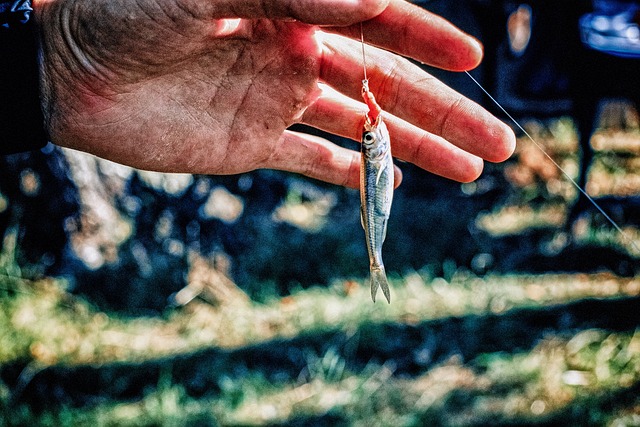
Set a fair price
Determine the cost of the live bait and set a fair price that will generate profit while still being affordable for customers.
Maintain the machine
Regularly check the temperature, cleanliness, and stock levels of the machine. Make sure the bait is always fresh and healthy, as customers will not buy expired or unhealthy bait.
Advertise
Let people know about your live bait vending machine by posting signs, promoting on social media, and reaching out to local fishing stores and fishing organizations.
By following these steps, you can successfully start and operate a live bait vending machine business.
With planning and a little hard work, you can make a profit while providing a convenient and essential service to the fishing community!
Hook, Line, and Sinker: Sell Your Catch
When you’re out on the water, fishing for fun or sport, why not turn those hard-earned catches into some cold, hard cash?
Instead of tossing the fish back into the depths, consider selling them to local seafood markets, restaurants, or even directly to your fellow fishing enthusiasts.
Did you know that the U.S. fish and seafood market is over $28 billion dollars per year??? That’s a lot of fish being sold!
Fresh fish straight from the water is always in high demand, and if you’re known for landing the big and tasty ones, you can charge a pretty penny.
Selling fresh fish and other fishing-related products can be one more great way to make some money and turn your favorite hobby into a profitable business.

Commercial fishermen, charter boat operators, or just plain ole recreational anglers can have many opportunities to sell their catch.
One of the easiest ways to sell fish is to sell it locally in your own area. This can include selling it to local restaurants, fish markets, or directly to consumers at farmers’ markets or through community-supported agriculture (CSA) programs.
When selling fish locally, you’ve got to make sure your fish is fresh, properly cleaned and packaged, and meets health and safety regulations — selling bad fish will tank your sales for sure!
Another way to sell fish is through online marketplaces, such as online fish markets or online retailers. This can be a great way to find more customers and to be able to sell your fish to folks who live outside of your local area.
If you do decide to sell fish online, it’s super important to have a crystal clear understanding of any and all shipping and packaging requirements.
There will also be regulations for selling food products online that you’ll need to follow closely.
Tackle E-commerce: Sell Fishing Gear Online
Fishing maniacs know that it isn’t just about the thrill of the chase and the satisfaction of landing a beauty — it’s also about the gear.
Anglers are always on the hunt for top-notch rods, reels, lures, and other essentials to enhance their fishing time out on the water.
Tap into this demand by setting up an online store and selling fishing gear and clothing.
You can either get products from established brands or create your own line of high-quality gear or clothes targeted at the needs of your audience.
A lot of people create “on-demand” products like t-shirts and hats and then sell those through sites like Amazon and eBay. The good thing about this method is that no website is required.
Just some of the fishing-related products you could sell include things such as homemade fishing lures, fishing clothing, or fishing accessories.
These products can be sold locally in a tackle shop, through online marketplaces, or through your own website.
Sell Homemade Fishing Lures
Selling homemade fishing lures can be a great way to make money from fishing.
You can make your own fishing lures from a lot of different kinds of materials — such as wood, plastic, or metal. You can then tweak and modify your lure designs to specific types of fish or fishing conditions.

When making homemade lures, it’s definitely important to use high-quality materials, and to test and fine-tune your design before selling them.
There are several websites (such as eBay) selling supplies and equipment you can use to make lures.
There are several different ways to go about selling homemade fishing lures. One option is to sell them locally, such as at fishing shows, flea markets, or fishing tackle shops.
Another option is to sell them through online marketplaces, such as eBay Amazon, or through your own website.
Shopify is one of the most popular and easiest to use eCommerce platforms to set up your own online store selling products.
You can get a 3-month trial with Shopify here.
When selling homemade lures online, it’s important to take high-quality photos and to provide detailed information about the lures, including their materials, size, and design.
Sell Fishing Merch
You could also consider creating and selling fishing-related merchandise, such as hats, t-shirts, and other items.
These items could have fishing related artwork or humorous sayings. If you have a company, you could sell items with your brand or logo. This can be a great way to promote your brand in addition to making some income.
- GONE FISHING: I’d rather be fishing! Let this comfortable t-shirt take you back to the lake, fishing with friends. Reel …
- PUNNY GIFTS: Our pun-derful designs are sure to put a smile on the face of anyone on your gift-giving list. Let us be yo…
- HERE IS YOUR NEW FAVORITE SHIRT: Crazy Dog manufactures its awesome tees to be the best super soft, high-quality shirts….

Selling fishing clothing — such as t-shirts, hats and more — can be another great way to make money from fishing.
Fishing t-shirts and hats can be designed with all kinds of fishing-related themes, such as a certain type of fish or a favorite fishing location.
They can also be personalized with the customer’s name or a special message.
When selling fishing clothing and other products, it’s important to use high-quality materials and to provide accurate sizing information.
You’ll also want to research the different marketplaces, whether online or offline.
Building a reputation with top-notch customer service and providing high-quality products will go a long way in helping you to attract more customers and grow your business — this means more moula!
In summary, selling homemade fishing lures and fishing-related clothing such as t-shirts can be a great way to make money from fishing.
These products can be sold locally, through online marketplaces like Amazon and eBay, or through your own web store.
You can also tailor your creations to specific types of fish or fishing conditions (bass fishing, ocean fishing, ice fishing, etc.).
By offering a variety of products — such as fishing-related clothing, accessories, and other items that are all related to different angle of fishing — you’ll appeal to a wider range of customers.
This can help to bump up your revenue streams and diversify your business — these are definitely all good things that can make the money start rolling in!
Make Money With a Fishing Blog
Fishing doesn’t have to just be a hobby or a way to catch food — it’s also an opportunity to make some money in ways beyond just selling fish or fishing-related products.
One alternative way to make money through fishing is through photography and then selling your photographs through a blog.
As a fishing enthusiast, you have the opportunity to capture unique and beautiful moments on the water.
These images can then be sold to magazines, stock photography websites, or sold and used on your own fishing blog website.

Another way to make money through fishing is through writing.
Many fishing enthusiasts enjoy sharing their experiences and knowledge with others. Creating your own fishing blog (this is our recommended source for website hosting) and writing fishing books, articles, or blog posts can be a great way to do this.
On your blog, you can write about different fishing techniques, the best spots to fish, and share your own personal experiences.
These articles can be published in online or print fishing magazines, or on your own website or blog. Additionally, you can write e-books, which can be sold online and through your blog.
Starting a blog may seem intimidating, but there are some great resources on how to start your own blog.
Many online bloggers use affiliate marketing as a powerful money maker.
Here’s a great resource for learning more about how to create a website with affiliate marketing.
Make Money With a Fishing Course
Another alternative way to make money through fishing is by offering fishing classes or courses either in person or online.
You may not think of yourself as a public speaker or a teacher, but no worries!
You don’t have to have a college degree, fancy credentials, or anything else for this type of teaching.
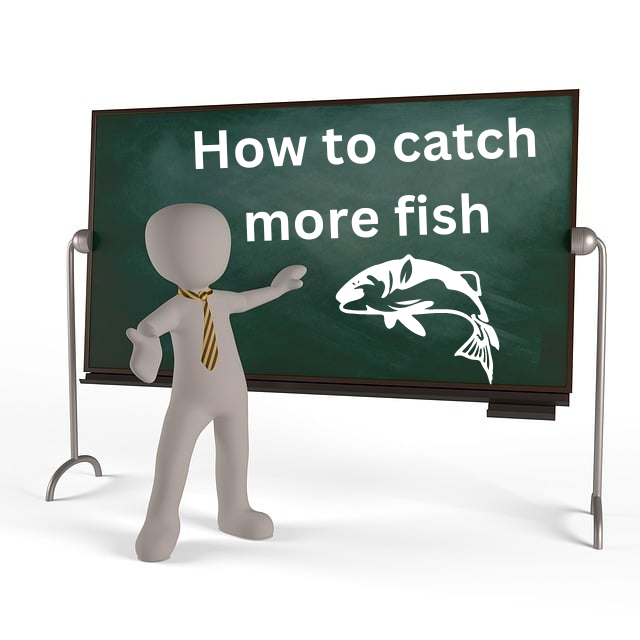
All that matters is that you’re an experienced fisherman who knows the sport, love fishing and can explain things clearly and in an interesting way. You’d be surprised at how people might respond to your classes, particularly if you mix in some funny life stories.
You can offer your knowledge and expertise to those who want to learn how to fish (or fish better), or who want to fish in specific areas.
This can include providing instruction on casting, tying knots, and identifying fish, as well as providing information on the best fishing spots and techniques.
Need some help getting started creating an online course? Skillshare has some awesome programs on course creation telling you what you need to get the ball rolling.
Get Hooked on YouTube: Start a Fishing Channel
In this digital age where everyone’s addicted to TikTok and YouTube, the possibilities for making videos are as endless as an open sea.
If you’ve got a knack for entertaining and an eye for capturing awe-inspiring footage, you can start your own fishing channel on YouTube or TikTok.
On your channel, you can share your expert tips, showcase your epic catches, and entertain viewers with your amazing charm and wit.
As your subscriber count climbs — and your videos rack up views — you can monetize your channel and see the dollars roll in.
Ads, sponsorships, and even selling your own branded merchandise are some of the best ways to make the YouTube bucks. Whoah yeah baby!!!
Getting started on YouTube isn’t super hard. But making it big on YouTube takes time and dedication. Literally thousands of other YouTubers have made a good income making videos of what they love.
Social media can also be a powerful tool for making money through fishing.
By creating a strong presence on platforms such as Instagram, Facebook, or making YouTube videos about fishing on a YouTube channel, you can build a following and promote your brand.
You can share photos and fishing videos of your fishing trips, provide tips and advice, and interact with your followers. This can help you to attract sponsorships, partnerships, or even a following that will pay for your services as a guide or for your products.
Are You Ready to Make Money Fishing?
So there you have it, my fishing buddies — 12 dynamite strategies to turn your angling passion into a lucrative cash flow. Any of these money-making opportunities are as vast as the open sea!
There are so many different ways to make money through fishing!
By exploring opportunities such as photography, writing, social media, guided fishing trips or classes, and creating and selling fishing-related merchandise, you can turn your passion for fishing into a money-making enterprise.
No matter which approach you decide to go with, just find the best fit for you based on your personal skillset, knowledge, and abilities.
Now that you’ve got some great ideas for how to make money fishing, it’s time to get to work!
Embrace the challenges, ride the waves of creativity, and don’t give up when the going gets rough And be sure to celebrate your victories along the way!
As we’ve discussed, there are quite a few different ways to make money through fishing.
Things like commercial fishing, charter business, competitions and sponsorships, and selling fish and other fishing-related products are all good options.
You can also explore alternative ways to make money through fishing, such as through photography, writing, and social media.
Final Thoughts on Making Money with Fishing
Do you really want to make money through fishing? If so, spend some time looking at and trying to figuring out how different parts of the fishing industry work — or at least the part of the industry you want to pursue.
Do some research and look at how others make money fishing and see if you can do the same — but do it even better.
This includes looking at things like regulations, local market trends, and customer demand. And don’t forget about a solid business plan!
You can build up your reputation with good customer service and a quality operation. This helps you to attract more customers and grow your business.
In this day and age of the Internet era, you also need to have a strong online presence. A good understanding of Internet marketing principles will go a long way to help you meet your business goals.
There are many resources available for further information and support on making money through fishing. This can include industry associations, online forums, and publications.
Additionally, it’s a great idea to network with other fishing enthusiasts and industry professionals to gain insight and learn from their failures and successes.
In conclusion, just like with every other business, how much money you make through fishing pretty much depends on the time and effort you are willing to put into it.
Even if you don’t make a lot of money, a fishing business can still be a profitable side hustle to rustle up some bucks in your spare time while enjoying your favorite outdoor activity.








